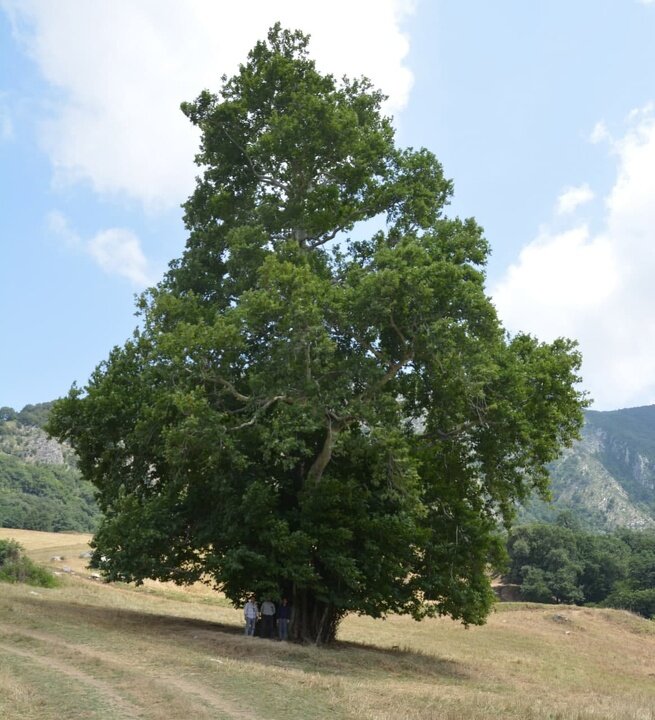Three ancient trees among Iran heritage list newcomers

TEHRAN – In a notable development, the Director-General of Cultural Heritage, Tourism, and Handicrafts in Golestan province proudly unveiled the recent registration of three ancient plane trees into Iran's national heritage list.
Mohammad-Javad Savari detailed that during a recent session of the Supreme Council for the Registration of natural heritage sites in Iran, attended by environmental experts, forestry pioneers, and representatives from the Ministry of Environment, the Organization of Forests and Rangelands, and the Director-General of the Registration of Historical, Cultural, and Natural Heritage at the Ministry of Cultural Heritage, Tourism, and Handicrafts, three natural heritage sites in Golestan province secured their official position on the national list.
Savari provided further insights into these registered sites, saying that these trees have an approximate age ranging between 350 to 400 years.
Savari emphasized that with the inclusion of these three sites, Golestan province has now accumulated a total of 44 entries in the country's national natural heritage list.
Expressing his optimism, Savari highlighted the province's abundance of springs, waterfalls, and natural wonders. “The strategic move to register these invaluable natural sites on the national heritage list marks a pivotal step toward preserving Iran's rich natural heritage. I anticipate that this initiative will pave the way for significant opportunities, attracting both domestic and international travelers to explore the wonders of Golestan province,” he added.
Furthermore, shedding light on the cultural and historical importance of Plane trees, it's noteworthy that they have always been revered as symbols of fertility and the lush greenery of nature in Iranian culture. Traditionally believed to possess healing properties, these trees were thought to prevent the spread of fever and infectious diseases. Planted predominantly in sacred areas such as prayer sites and holy shrines, they hold a unique place in the cultural tapestry of Iran.
Adding to its allure, Iran boasts an opulent tourist circuit featuring 27 UNESCO World Heritage sites, with treasures like the vast Hyrcanian Forest and the mesmerizing Lut Desert among its natural wonders. As Iran ambitiously looks forward to 2025, the country aims to carve a more substantial share in the global tourism industry, leveraging its rich cultural and natural heritage.
